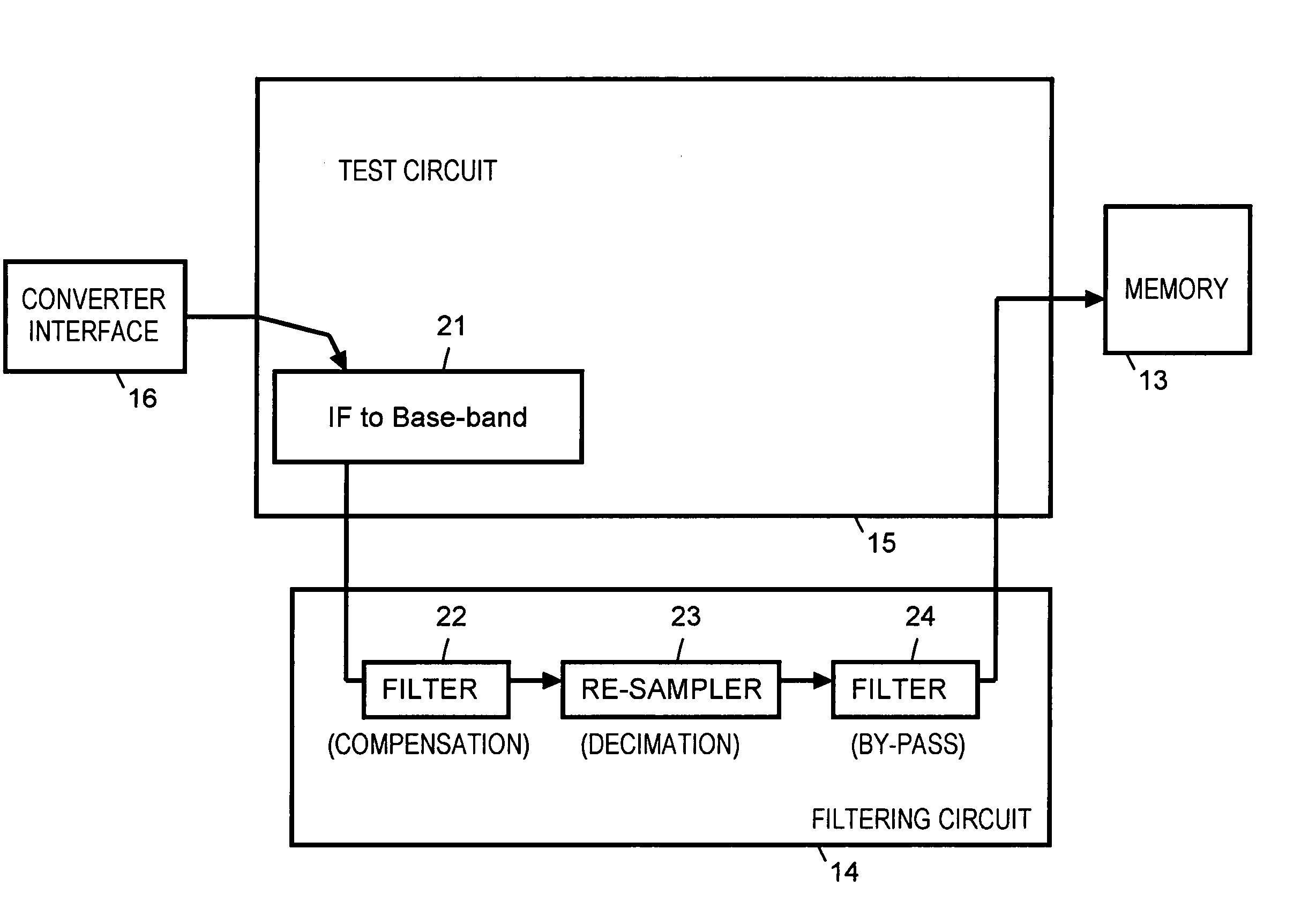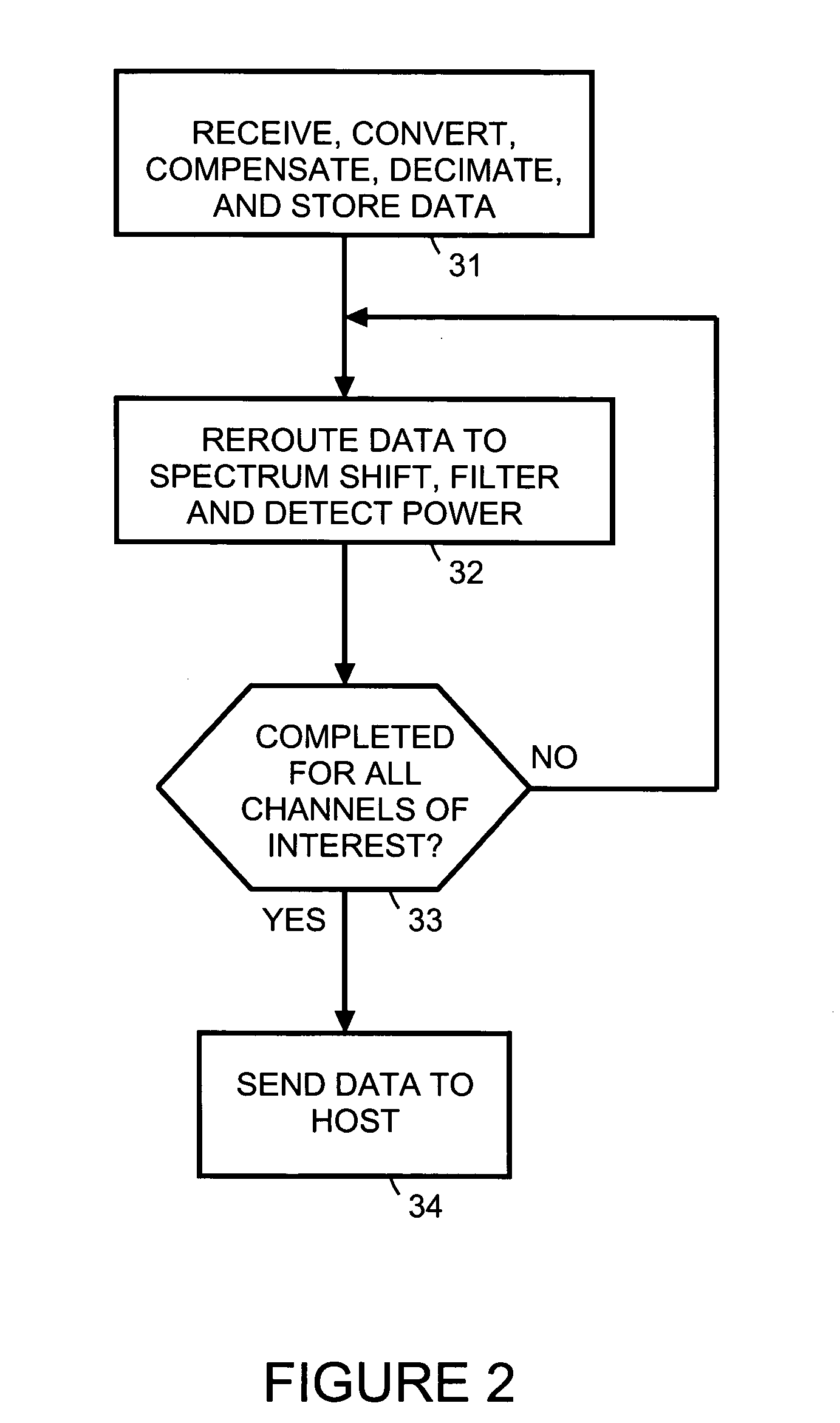Hardware assisted adjacent channel leakage ratio measurement
a technology of leakage ratio and adjacent channel, which is applied in the direction of instruments, transmission monitoring, phase-modulated carrier systems, etc., can solve the problems of low measurement speed, relatively long time, and 5 milliseconds (ms)
- Summary
- Abstract
- Description
- Claims
- Application Information
AI Technical Summary
Benefits of technology
Problems solved by technology
Method used
Image
Examples
Embodiment Construction
[0012]FIG. 1 is a simplified block diagram of a test module added to a host system10. For example host system 10 is a spectrum analyzer system such as an Agilent PSA series High-Performance Spectrum Analyzer, available from Agilent Technologies, Inc. Alternatively, host system 10 is some other type of analyzer system such as a vector signal analyzer. The test module is, for example, implemented as a daughter board for use by host system 10.
[0013] The test module includes a host interface 17, a microcontroller 12, memory 13, a filtering circuit 14, a tester circuit 15 and a converter interface 16 connected via a bus 18.
[0014] For example, host interface 17 is a peripheral component interconnect PCI bus standard compatible interface. Microcontroller 12 is, for example, implemented using a PowerPC compatible reduced instruction set computer (RISC) microprocessor available from IBM or Motorola, Inc.
[0015] For example, converter interface 16 receives from host system 10 hardware inter...
PUM
 Login to View More
Login to View More Abstract
Description
Claims
Application Information
 Login to View More
Login to View More - R&D
- Intellectual Property
- Life Sciences
- Materials
- Tech Scout
- Unparalleled Data Quality
- Higher Quality Content
- 60% Fewer Hallucinations
Browse by: Latest US Patents, China's latest patents, Technical Efficacy Thesaurus, Application Domain, Technology Topic, Popular Technical Reports.
© 2025 PatSnap. All rights reserved.Legal|Privacy policy|Modern Slavery Act Transparency Statement|Sitemap|About US| Contact US: help@patsnap.com



